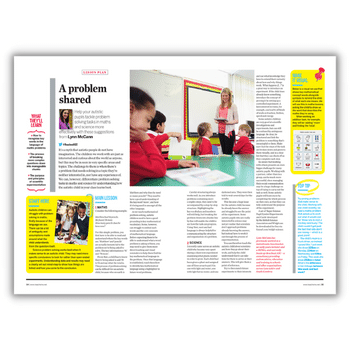SEND crisis – tips to overcome it from a SENCO

There’s only one way out of the SEND crisis… and it’s simpler than you think, says Hannah Moloney

“No thanks, I don’t want to be the SENCO. And in any case, I don’t even know what our SENCO actually does…”
That was me ten years ago. Needless to say, a couple of months later I did become the school SENCO (and loved it, FYI). For anyone who has not had the privilege of being a SENCO, it really is one of the most rewarding jobs in school.
But it is also true to say that there are very challenging barriers to being ‘a good one’, and with the SEND crisis in full-swing, I really believe that removing them will enable our nation’s SENCOs to get us out of it.
The SENCO is the ‘key protagonist’ in the functioning of the SEND Code of Practice (2015); the lynchpin between parents, teachers, local authorities, other schools and specialists within the field.
They are expected to be leaders, trainers, managers, bookkeepers, communicators, advocates, counsellors and inspirers. This is in addition to their teaching role, and not to mention whilst achieving a master’s-level qualification within three years.
Suffice to say, the SENCO role is a vast, diverse and morally compelling job and of the thousands of SENCOs who have taken our SENCO Workforce Surveys, 71% agree.
The real problem is we very rarely have enough time to do it.
Finding time
I know that all teachers complain about their workload, but the SENCO role is arguably the most time poor of them all. For my own part, I once had just seventeen minutes a year per child on the SEND register (24 seconds a week!).
And this is a whole lot better than the 2.5% of primary SENCOs out there who don’t have any additional time at all to do the role!
Together with nasen and Bath Spa University, I have studied SENCO time allocations over the last three years. Encouragingly, SENCO time allocation does seem to be gradually improving, but not fast enough.
Back in 2018, we reported that the most common time allocation for primary SENCOs was between 0.5-1 day a week, but that overall, a staggering 86% of respondents said that they didn’t have enough time to ensure children at SEN Support could access what they need.
Even with a higher level of need, 77% of SENCOs stated they didn’t have enough time to ensure that their children with an EHCP were accessing the support to which they are legally entitled.
Although better by 2020, the proportion of SENCOs without sufficient time to meet the needs of children and young people with SEND remained too high at 81% and 71% for those at SEN Support and those with EHC plans respectively.
If the SENCO doesn’t have enough time to do their job, it’s simple: children suffer. And, as we know, when children are suffering, teaching and parenting becomes much more challenging and more costly, and positive outcomes dwindle.
The whole system rests precariously upon the shoulders of SENCOs – no wonder only 26% of us agree that the job is manageable for one person. This makes it a hugely important role but an isolating one, too.
Supporting colleagues
No (wo)man is an island – the majority of SENCOs are women – and yet so few SENCOs have a team to delegate to and work alongside. In fact, in 2018, 28% of SENCOs had no team at all, and 49% had no one to call upon outside of their setting either.
And whilst the SEND Code of Practice states SENCOs should have administrative support, only 15% last year did!
The Code of Practice also expresses that SENCOs will be much more effective if they are on the school’s leadership team. Whilst just over two thirds of primary SENCOs are on their school’s SLT (a much better picture than at secondary), 30% said they still don’t receive additional pay for taking on this fundamental and highly skilled role.
So what can you do to help? If you’re a teacher, consider how you can better support your SENCO to complete their role. Corridor conversations are great but follow up with an email or a reminder: the SENCO’s brain is generally frazzled and their to-do list is long.
If you’re on the leadership team, a headteacher, a business manager or a governor, how can you free up your SENCO to be more effective in their role? Millions of children’s lives depend on it.
Hannah Moloney is a SENCO, SEND Researcher and co-author of the National SENCO Workforce Survey: time to review 2018-2020 (nasen and Bath Spa University, July 2021). View the report at bathspa.ac.uk/projects/senco-workload/












